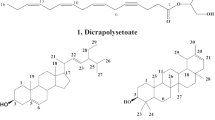Abstract
Forty solvent fractions and 387 bacterial isolates of seven varieties of Korean domestic honey and manuka honey from New Zealand were screened for antimicrobial activity. The minimum inhibitory concentrations and minimum bactericidal concentrations of the honey fractions were determined; only Bacillus cereus ATCC 14579, ATCC 11778, and F4552 were inhibited by 11, 1, and 16, respectively, out of the 40 honey fractions. The bacterial isolates showed the highest incidence (30.2%) of antimicrobial activity against Listeria monocytogenes ATCC 15313. The growth of at least one of the five foodborne pathogens tested was inhibited by 109 of the 327 isolates (33.3%) from seven types of Korean domestic honey. The percentage of such isolates of manuka honey was significantly higher (76.7%). Solvent fractionation of honey could contribute to the detection of antimicrobial activity of the nonsugar compounds in honey. Moreover, the bacterial isolates from Korean domestic honey may be good sources for the natural antimicrobials used in the food industry and other related industries.
Similar content being viewed by others
References
Molan PC. The antibacterial activity of honey: 1. The nature of the antibacterial activity. Bee World 73: 5–28 (1992)
Molan PC. The antibacterial activity of honey: 2. Variation in the potency of the antibacterial activity. Bee World 73: 59–76 (1992)
Gheldof N, Wang XH, Engeseth NJ. Identification and quantification of antioxidant components of honeys from various floral sources. J. Agr. Food Chem. 50: 5870–5877 (2002)
Malika N, Mohamed F, Chakib EA. Antimicrobial activities of natural honey from aromatic and medicinal plants on antibio-resistant strains of bacteria. Int. J. Agric. Biol. 6: 289–293 (2004)
Kim ES, Rhee CO. Comparison of quality attributes of Korean native-bee honey and foreign-bee honey by K/Na ratio. J. Korean Soc. Food Sci. Nutr. 25: 672–679 (1996)
Lee DC, Lee SY, Cha SH, Choi YS, Rhee HI. Characteristics of native-bee honey harvested in Kangwon-area. Korean J. Food Sci. Technol. 29: 1082–1088 (1997)
Taormina PJ, Niemira BA, Beuchat LR. Inhibitory activity of honey against foodborne pathogens as influenced by the presence of hydrogen peroxide and level of antioxidant power. Int. J. Food Microbiol. 69: 217–225 (2001)
Lee ML, Kim HK, Lee MY, Choi YS, Kim HB, Chung HG, Kim SH. Antioxidant and antibacterial capacity of chestnut (Castanea crenata var. dulcis) honey produced in Korea. Korean J. Apic. 22: 147–152 (2007)
Allen K, Molan P, Reid G. A survey of the antibacterial activity of some New Zealand honeys. J. Pharm. Pharmacol. 43: 817–822 (1991)
Wahdan H. Causes of the antimicrobial activity of honey. Infection 26: 26–31 (1998)
Mundo MA, Padilla-Zakour OI, Worobo RW. Growth inhibition of foodborne pathogens and food spoilage organisms by select raw honeys. Int. J. Food Microbiol. 97: 1–8 (2004)
Zumla A, Lulat A. Honey-a remedy rediscovered. J. Roy. Soc. Med. 82: 384–385 (1989)
Weston RJ. The contribution of catalase and other natural products to the antibacterial activity of honey: A review. Food Chem. 71: 235–239 (2000)
Weston RJ, Mitchell KR, Allen KL. Antibacterial phenolic components of New Zealand manuka honey. Food Chem. 64: 295–301 (1999)
Shin H-S, Ustunol Z. Carbohydrate composition of honey from different floral sources and their influence on growth of selected intestinal bacteria: An in vitro comparison. Food Res. Int. 38: 721–728 (2005)
Roberts AEL, Maddocks SE, Cooper RA. Manuka honey reduces the motility of Pseudomonas aeruginosa by suppression of flagella-associated genes. J. Antimicrob. Chemoth. 70: 716–725 (2015)
Eick S, Schäfer G, Kwieciñski J, Atrott J, Henle T, Pfister W. Honey–a potential agent against Porphyromonas gingivalis: An in vitro study. BMC Oral Health 14: 24 (2014)
Al Somal N, Coley KE, Molan PC, Hancock BM. Susceptibility of Helicobacter pylori to the antibacterial activity of manuka honey. J. Roy. Soc. Med. 87: 9–12 (1994)
Mavric E, Wittmann S, Barth G, Henle T. Identification and quantification of methylglyoxal as the dominant antibacterial constituent of Manuka (Leptospermum scoparium) honeys from New Zealand. Mol. Nutr. Food Res. 52: 483–489 (2008)
Alvarez-Suarez JM, Gasparrini M, Forbes-Hernández TY, Mazzoni L, Giampieri F. The composition and biological activity of honey: A focus on Manuka honey. Foods 3: 420–432 (2014)
Chung DH, Baek SH. Antibacterial activities of honeys on the Staphylococcus aureus. Korean J. Food Nutr. 15: 158–164 (2002)
Matongo F, Nwodo UU. in vitro assessment of Helicobacter pylori ureases inhibition by honey fractions. Arch. Med. Res. 45: 540–546 (2014)
Baek Y, Kim YJ, Baik MY, Kim DO, Lee H. Total phenolic contents and antioxidant activities of Korean domestic honey from different floral sources. Food Sci. Biotechnol. 24: 1453–1457 (2015)
Harding CD, Shaw E. Antimicrobial activity of Leuconostoc gelidum against closely related species and Listeria monocytogenes. J. Appl. Bioteriol. 69: 648–654 (1990)
Hammond EN, Donkor ES. Antibacterial effect of Manuka honey on Clostridium difficile. BMC Res. Notes 6: 188 (2013)
Lee H, Churey JJ, Worobo RW. Antimicrobial activity of bacterial isolates from different floral sources of honey. Int. J. Food Microbiol. 126: 240–244 (2008)
Lee H, Churey JJ, Worobo RW. Biosynthesis and transcriptional analysis of thurincin H, a tandem repeated bacteriocin genetic locus, produced by Bacillus thuringiensis SF361. FEMS Microbiol. Lett. 299: 205–213 (2009)
Lee H, Churey JJ, Worobo RW. Purification and structural characterization of bacillomycin F produced by a bacterial honey isolate active against Byssochlamys fulva H25. J. Appl. Microbiol. 105: 663–673 (2008)
Author information
Authors and Affiliations
Corresponding author
Rights and permissions
About this article
Cite this article
Lee, S.K., Lee, H. Antimicrobial activity of solvent fractions and bacterial isolates of Korean domestic honey from different floral sources. Food Sci Biotechnol 25, 1507–1512 (2016). https://doi.org/10.1007/s10068-016-0234-0
Received:
Revised:
Accepted:
Published:
Issue Date:
DOI: https://doi.org/10.1007/s10068-016-0234-0



